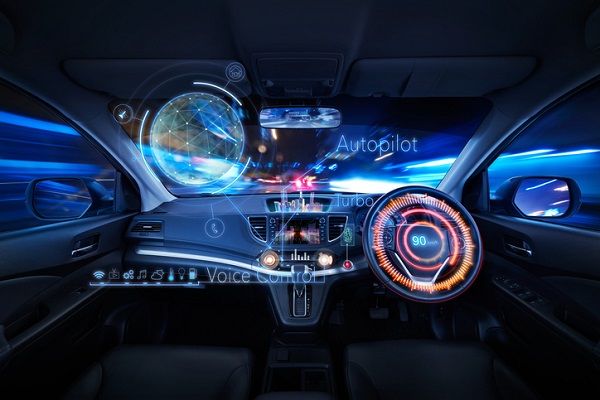
As hard as a future without a steering wheel might be to imagine, it’s a testament to how far auto technology has been evolving that it might eventually bite the dust. Here’s a closer at what exactly we can expect for the future of the steering wheel.
A Look at the Steering Wheel’s Evolution, From the 19th Century to Now
The concept of a steering wheel arguably originates from the ship’s wheel found on sea vessels. However, the first-ever auto steering wheel made an appearance in 1894, when Alfred Vacheron competed in the Paris-Rouen motor race with a steering wheel fitted onto his Panhard vehicle. Before that, early cars were steered with a tiller.

The steering wheel did its share of shapeshifting as time went on. After Vacheron’s race, Panhard would later make the steering wheel standard in their cars, starting in 1898. In the ensuing years, the Rambler automotive brand would develop mass-produced cars equipped with steering wheels, and auto manufacturers would also add bulb horns to the steering wheels to alert other drivers during traffic.
Aspiring auto service technicians might also be interested to learn that early steering wheels would typically be comprised of wooden sheathing and a metal carrier, with the wood components eventually being replaced by plastic for safety and cost-efficiency reasons. Components such as airbags, cruise control, and radio controls were also added as features over time, and steering wheels would also be lined with leather to allow a better grip for drivers.
Auto Technology is Trying to Reinvent the Wheel — Literally!
Auto technology continues to push forward, and steering wheels are no exception. New advances in car technology could even make the steering wheel extinct, mainly due to the development of self-driving vehicles.
In 2018, Volkswagen unveiled its I.D. Vizzion concept electric car, a level 5 autonomous vehicle that features no steering wheel or dashboard whatsoever. While these capabilities are not expected to make the car’s 2022 production version, the project could very well be a window into what driving could look like a decade from now.

While Volkswagen experiment with eliminating steering wheels, Jaguar has been busy developing steering wheels that don’t really look like steering wheels. Known as Sayer, this concept wheel is controlled by an AI system, and is smaller than traditional steering wheels, as well as being rectangular in shape.
Other manufacturers are experimenting with new steering wheel technology, too. In 2014, Swiss auto manufacturer Rinspeed announced their development of a concept steering wheel docked in the centre of the vehicle that can be shifted to self-driving mode.
In May 2019, meanwhile, Hyundai revealed their vision to have touch screens on their steering wheels, performing functions that would otherwise be done via physical buttons. With so many possibilities for the future, it’s safe to say there will be a few twists and turns in the story of the steering wheel in the years to come.
Interested in auto mechanic training in Cambridge?
Contact Automotive Training Centres for more information!

